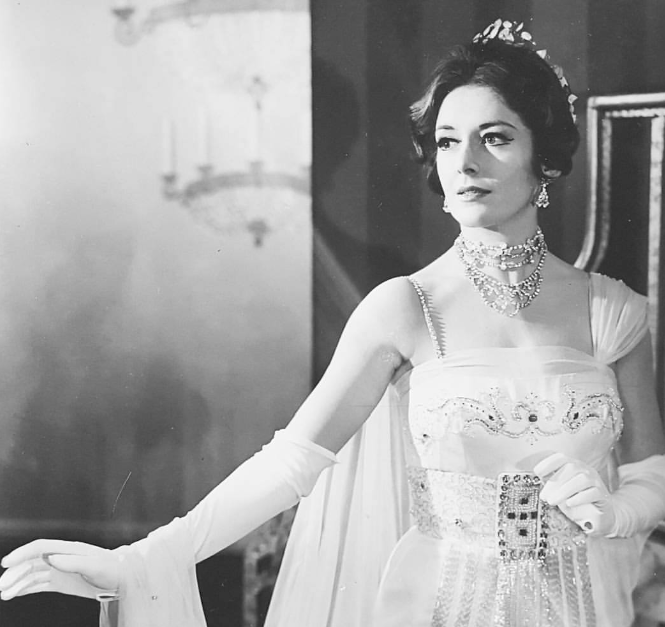Jill Martin: English Musical Theatre Actress
Jill Martin, an accomplished actress from England, has made her mark in the world of musical theatre. She was born on February 24, 1938 in London, England. Martin’s acting career spans over five decades, during which she has played a broad range of roles on stage. She is most recognized for her work in musicals such as “Cats” and “Starlight Express”, where her powerful vocals and emotive performances have captivated audiences worldwide. Martin’s contribution to the arts extends beyond acting; she is also a respected voice coach and mentor to emerging talents. Despite her extensive career, she remains a humble artist, often crediting her success to her love for the stage and the support of her audiences.
Early Life and Biography
Examining the early life and biography of individuals can offer profound insights into the formative influences and experiences that shaped their character, values, and life trajectory. The term ‘early life’ typically refers to the period of infancy, childhood, and adolescence, while ‘biography’ encompasses the comprehensive narrative of a person’s life from birth to present or until their demise. The early life phase is particularly significant as it is typified by rapid physical, cognitive, and emotional growth, which lays the foundation for future development. Biographies, on the other hand, provide a holistic view of an individual’s life, encapsulating pivotal moments, experiences, and achievements across various domains including personal, professional, and socio-cultural. Biographies also illuminate the individual’s interactions with their socio-historical context, thereby offering valuable perspectives on the zeitgeist of the era they lived in.
A well-researched and detailed biography can serve as a valuable resource for scholars, researchers, and enthusiasts, offering a wealth of knowledge about the individual’s life and times. Furthermore, it can inspire readers by showcasing the resilience, creativity, and perseverance of the individual in overcoming life’s challenges and achieving their goals. Thus, the exploration of early life and biography can not only enrich our understanding of the individual’s life but also foster appreciation for the complex interplay of personal and environmental factors that shape human lives.
Career Highlights and Achievements
Career highlights and achievements are significant milestones that serve as a testament to an individual’s skills, abilities, and growth in their professional life. They display an individual’s capacity for innovation, leadership, and success in their respective field. These milestones may range from promotions, successful projects, notable contributions to the industry, recognitions, awards, or even overcoming significant challenges at work. Career achievements are not limited to the workplace but can also include contributions to academic research, publications, or community service related to one’s profession.
These highlights play a crucial role in one’s professional development and advancement as they reflect one’s dedication, commitment, and ability to excel. They are often used in resumes and job interviews to demonstrate one’s capabilities and value to potential employers. Moreover, they can inspire and motivate others to strive for excellence in their own careers. It is important to note that what may be considered as a highlight or achievement can vary greatly among individuals, depending on their career goals, values, and personal definitions of success. Therefore, every professional journey is unique, marked by its own set of highlights and achievements that collectively tell the story of one’s career.

Major Theatre Roles
In the world of performing arts, major theatre roles are of paramount importance in shaping the narrative and driving the plot of a play. These roles are typically embodied by the lead actors, who are responsible for conveying the play’s central themes and messages to the audience. The protagonists and antagonists are prime examples of major roles, often having the most complex character arcs and the most significant impact on the story’s progression. In musical theatre, these roles may also involve significant singing or dancing responsibilities, adding an extra layer of difficulty and requiring extensive training and talent.
Beyond acting, major theatre roles also encompass the director, who is in charge of overseeing the entire production, setting the stage, and guiding the actors in their performances. Playwrights, who pen the script, are also integral to a production. Their creative vision forms the backbone of the narrative, providing the foundation for the characters and plot.
Another substantial role is that of the stage manager, who ensures that everything runs smoothly behind the scenes. They coordinate between different departments, manage the rehearsal schedule, and handle any issues that may arise during the performance.
Lighting and sound designers also play critical roles. Through their expertise, they create the atmosphere and mood for the play, enhancing the audience’s emotional engagement with the story. The costume designer, too, has a significant role, as they create the visual image of each character and often influence the audience’s perception of them.
It’s essential to remember that while these roles are deemed ‘major’ due to their significant impact on the performance, every role within a theatre production is vital. Each person, whether on stage or behind the scenes, contributes to the success of the production and the experience it provides for the audience. Therefore, in the complex and interconnected world of theatre, every role, major or minor, is pivotal in bringing a story to life on stage.
Personal Life and Public Persona
The complexity of the interplay between personal life and public persona is particularly evident in the sphere of celebrity culture, where individuals often cultivate a specific image to present to the world while simultaneously attempting to maintain a degree of privacy. This dichotomy is not exclusive to famous personalities, however. Every individual, to some extent, grapples with balancing their authentic self and the self they project in various social contexts. The public persona is often a carefully curated presentation, tailored to meet societal expectations, professional demands, or to foster specific relationships. It can be a powerful tool that aids in navigating the wider world and achieving personal goals.
However, the chasm between the personal and the public can lead to a sense of dissonance and conflict, especially when the public persona is vastly different from the individual’s private identity. It’s further complicated by the advent of social media platforms, where the boundary between the personal and public becomes increasingly blurred. The pressure to maintain an attractive, successful, and happy online presence can be exhausting and detrimental to mental health. It’s a high-wire act of managing self-expression and self-preservation in a culture that demands transparency but is quick to judge.
On the other hand, when personal life and public persona align closely, there is a sense of authenticity and integrity that can enhance one’s reputation and connections. It allows for greater consistency across different domains of life, reducing the cognitive load of switching roles or masks. The key lies in finding the right balance, where public persona reflects one’s personal values and beliefs without compromising privacy or personal well-being. This balancing act between private life and public persona is a perennial challenge in the modern age, filled with complexities and nuances that can shape an individual’s life experience.

Influence and Contributions to Theatre
Over time, various individuals, cultures, and movements have significantly impacted and shaped the theatre as we know it today. From ancient Greek tragedies to the immersive virtual performances of the 21st century, the evolution of theatre reflects the collective creativity, innovation, and cultural shifts of mankind. The Greeks, for instance, introduced the idea of a protagonist and antagonist, which remains a fundamental narrative structure in contemporary theatre. Shakespeare’s work, with its rich language and complex characters, is still widely performed, influencing countless playwrights and directors.
In the 20th century, the rise of realism brought a significant change, emphasizing naturalistic performances and relatable, everyday scenarios. Practitioners like Stanislavski and Brecht developed revolutionary acting techniques and styles to achieve this realism, influencing generations of actors and directors worldwide.
Similarly, the advent of technology has opened the doors to more immersive and interactive forms of theatre, allowing audiences to experience narratives in new, innovative ways. Site-specific performances, immersive theatre, and even virtual reality shows have transformed the traditional understanding of the theatre space and the audience’s role.
Moreover, theatre has always been a medium to reflect and critique social issues, making important contributions to societal discourse. Plays tackling issues of race, gender, politics, and identity have not only raised awareness but also triggered essential conversations and changes.
Different cultures have also enriched theatre significantly. Japanese Noh and Kabuki, Indian Kathakali, Chinese Opera, and African tribal performances, among others, have brought diverse storytelling methods, aesthetics, and perspectives. These traditions continue to inspire contemporary theatre, contributing to its richness and diversity.
In essence, the influence and contributions to theatre are vast and multifaceted. They highlight theatre’s dynamic nature, its capacity to adapt, evolve, and remain relevant across times, cultures, and societies. They also underscore the importance of theatre as a tool for storytelling, reflection, and change, reminding us of its enduring significance in human civilization.
Awards and Recognition
Awards and recognition serve as significant elements in various fields of life, including academia, business, arts, sports, and more. They represent a formal acknowledgment of an individual’s or a team’s outstanding achievements or exceptional performance in a specific area. This recognition can significantly boost morale, drive motivation, and inspire others to strive for excellence. It validates the hard work, commitment, and dedication that went into accomplishing a task or goal.
Awards can be in different forms such as trophies, certificates, plaques, or even monetary rewards. They are often given during special ceremonies or events, making the recognition public and more meaningful. In the corporate world, awards can help in creating a competitive environment and encouraging employees to perform at their best. In arts and sports, they can highlight unique talents and skills, elevating the standards of performance. Meanwhile, in academics, they can acknowledge scholarly excellence, fostering a love for learning among students. Regardless of the field, the importance of awards and recognition cannot be underestimated as they contribute to personal growth, professional development, and societal progress. They not only honor the recipients but also set a benchmark for others to aspire to.
